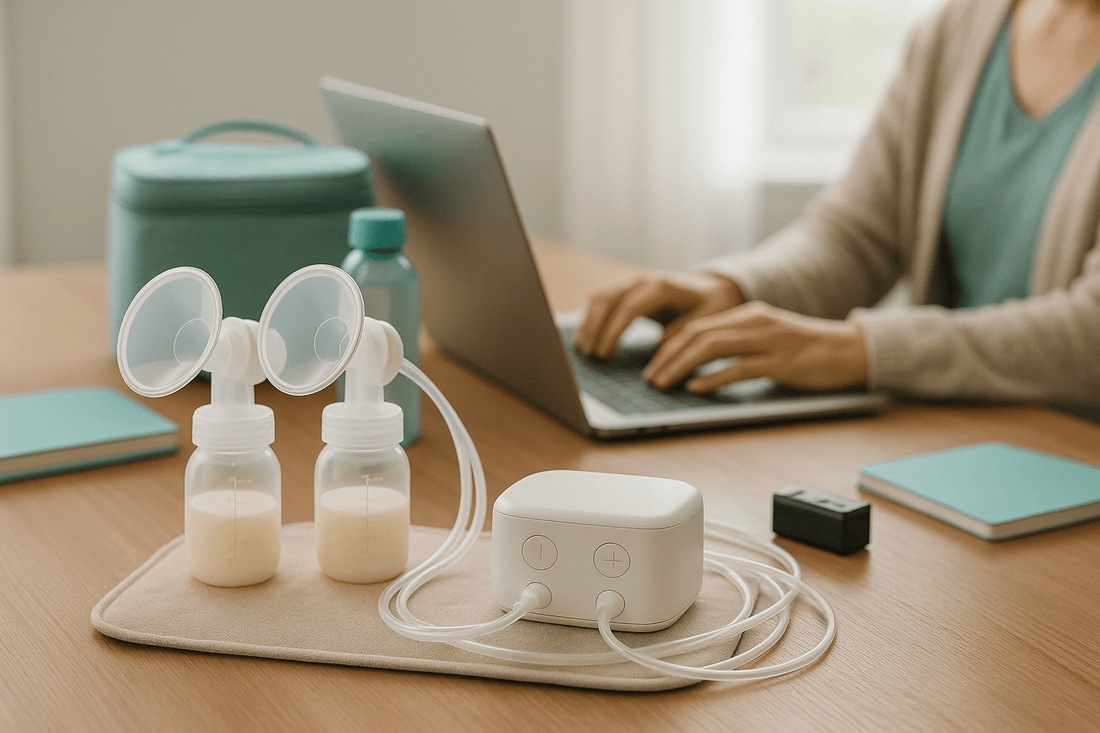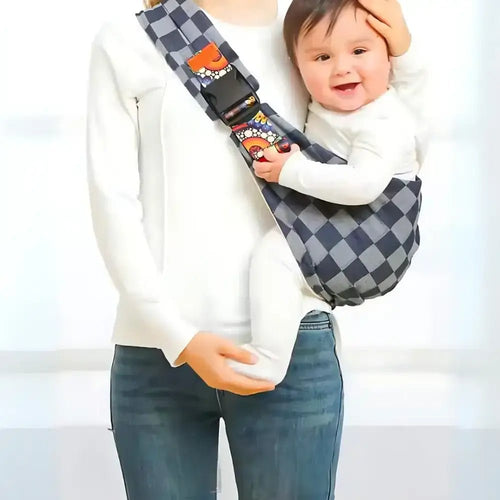
Medela Pump In Style with MaxFlow: Specs, Levels, Setup & Pro Tips
Looking at Pump In Style® with MaxFlow™? This compact double electric pump pairs MaxFlow micro-vibrations with 2-Phase Expression® and offers 10 vacuum levels in a closed system (when used with PersonalFit Flex™ connectors). Below: what the specs mean, how to dial levels, a no-guesswork setup, flange sizing in millimeters, CDC-style cleaning & storage, plus real-life portability, parts care, noise tips, and a workday packing checklist.
Key specs at a glance
- Technology: MaxFlow™ micro-vibrations + 2-Phase Expression® (Stimulation → Expression)
- Vacuum levels: 10 user-selectable levels
- Vacuum range: commonly referenced operating range around ~50–240 mmHg; peak values depend on test conditions and parts integrity
- System: Closed system when used with PersonalFit Flex™ connectors (helps keep milk out of tubing/motor path)
- Power: AC adapter + accessory battery pack for 8×AA (portable backup)
- Double pumping: Yes; pre-programmed cycles simplify setup
- In the box (typical): Pump, tubing, PersonalFit Flex shields/connectors (two sizes), bottles/lids, power + battery pack
Modes & vacuum levels
Pump In Style starts in Stimulation (fast, light pattern) to trigger let-down, then shifts to Expression (slower, deeper pulls). There are 10 vacuum levels; increase gradually until milk flows well—then stop. Comfort matters: the lowest effective level helps output without soreness. If let-down begins early, use the Let-Down button to switch modes.
- Level pacing: Move up one level every 30–60 seconds until flow is steady; avoid sudden jumps.
- Two-phase strategy: If flow stalls, drop to Stimulation for 60–90 seconds, then return to Expression.
- Hands-on pumping: Gentle compressions during Expression can improve emptying and comfort.
Setup & first session
- Assemble & seal: Seat valves/membranes firmly; use PersonalFit Flex connectors to preserve the closed system.
- Align & fit: Center the nipple; check that the shield sits flush without pinching or blanching.
- Start gently: Begin in Stimulation at a low-to-moderate level; relax shoulders, sip water.
- Switch & fine-tune: Once milk flows, switch to Expression and adjust one step at a time.
- Typical duration: Double sessions often run ~15–20 minutes; stop when comfortably empty.
- Comfort between sessions: For surface tenderness, some parents use silver nursing cups between feeds—remove before nursing or pumping.
Flange sizing (mm)
Measure your nipple diameter in millimeters (exclude areola) and choose the closest size. Signs you may need a different fit: rubbing, blanching, nipple pulled too deeply, or lingering soreness. If unsure, test one size up/down or consult an IBCLC.
- Tip: A light food-safe lubricant on the rim (if compatible with your parts) may reduce friction.
- Symmetry: Many parents use different sizes on each side—fit each breast individually.
Cleaning & milk storage
- Parts care: After each session, wash milk-contact parts with hot, soapy water; rinse well and air-dry. Sanitize per brand instructions.
- Fresh milk: Room ≤77°F (25°C) up to 4 hours · Refrigerator up to 4 days · Freezer ~6 months best (≤12 months acceptable).
- Thawed milk: If thawed in the fridge, use within 24 hours; don’t refreeze; avoid microwaving.
- On the go: With frozen ice packs in an insulated cooler, milk typically stays cold for up to ~24 hours; transfer at destination.
Portability & power tips
- Battery pack basics: The accessory 8×AA pack is a reliable backup for commutes or outages. Use fresh, high-quality alkalines or rechargeables; avoid mixing old/new cells.
- Cable management: Keep tubing gently coiled; avoid tight bends near connectors to maintain suction.
- Bag choice: A pump-friendly backpack with a wipe-clean liner and a small cooler pocket streamlines your routine.
-
Desk setup: A folding privacy screen, a light cardigan, and quiet zipper pulls make office sessions smoother.

Parts & replacement cadence
Output often improves by proactively refreshing wear items. A common cadence (adjust to your usage and the manufacturer’s guidance):
- Duckbill valves/membranes: ~4–8 weeks in heavy daily use; inspect for micro-tears or “gaping mouth.”
- Tubing: Replace if you see condensation that won’t clear, discoloration, or loose fit at barbs.
- Flanges/shields: Replace if warped, cracked, or if comfort declines despite correct size.
- Connectors/backflow parts: Swap if seals loosen or after notable drops that may crack hidden edges.
Noise, comfort & privacy
- Surface matters: Place the pump on a soft pad or mouse mat to reduce tabletop resonance.
- Door etiquette: A “brief meeting” sign or a calendar block reduces interruptions.
- Comfort stack: Support your elbows with pillows; a warm compress for 2–3 minutes can ease let-down.
- Scent-free zone: Fragrance-free soaps minimize nipple/areola irritation for sensitive skin.
Workday packing checklist
- Pump + power + AA battery pack
- Flanges & tubing (spare valves/membranes)
- Hands-free pumping bra
- 4–6 bottles + storage bags + labels/marker
- Ice/gel packs + compact insulated cooler
- Wipes + mini dish soap + foldable drying mat
- Wet bag (removable, leak-resistant)
- Water bottle + light snack
- Cardigan/scarf for discretion
PUMP • POWER • FLANGES • TUBING • VALVES • BRA • 4–6 BOTTLES • BAGS • ICE PACKS • COOLER • WIPES • SOAP • DRY MAT • WET BAG • LABELS • WATER • SNACK • COVER
Who it fits & quick comparisons
Pump In Style with MaxFlow is a strong pick if you want a simple, reliable, desk-friendly double electric with a closed system and predictable cycles. If you prioritize truly cordless use and in-bra cups, consider a wearable; if you want maximum programmability and external bottles, a “desktop-style” double electric may appeal.
| Use case | Pump In Style | Alternative direction |
|---|---|---|
| Office or home desk pumping | Stable, predictable, closed system | Wearables if mobility > power priority |
| Budget + proven brand ecosystem | Widely available parts & support | Premium programmables for custom cycles |
| Backup power flexibility | AA battery pack option | Built-in Li-ion (rechargeable) models |
Troubleshooting (advanced)
- Weak suction: Reseat membranes/valves; check for micro-tears; ensure the connector gaskets are fully seated; confirm tubing is firmly pushed onto barbs.
- Milk in tubing: Replace affected tubing; inspect backflow components; ensure shield angle doesn’t tilt upward.
- One side lagging: Try a different shield size on that side, reposition nipple center, apply gentle compressions.
- Nipple soreness: Reduce one level; revisit flange size; shorten session and add a brief Stimulation burst mid-session.
- Output dip after weeks: Refresh valves/membranes; verify hydration and calories; add a consistent morning pump when possible.
FAQ
Is it a closed system?
Yes—when used with PersonalFit Flex connectors, backflow is prevented to help keep milk out of tubing/motor path.
How many vacuum levels are there?
Ten. You can adjust in both Stimulation and Expression phases; start low and increase slowly.
What’s the suction in mmHg?
Commonly referenced typical operating vacuum is around ~50–240 mmHg; actual values vary with assembly, seal quality, and test conditions.
Is there a rechargeable battery?
Pump In Style ships with an accessory AA battery pack. For integrated rechargeable and in-bra cups, consider hands-free/wearable lines.
Can I use hands-free collection cups?
Many parents pair traditional motors with compatible cups via adapters. Check cup compatibility and follow both brands’ manuals.
Any tips for pumping discreetly at work?
Use a cardigan/scarf, pre-assembled parts in a zipper pouch, a soft mat under the pump to dampen noise, and calendar blocks to protect your time.


